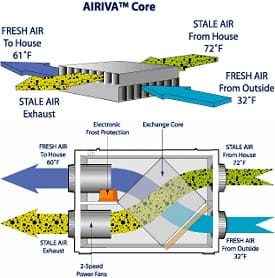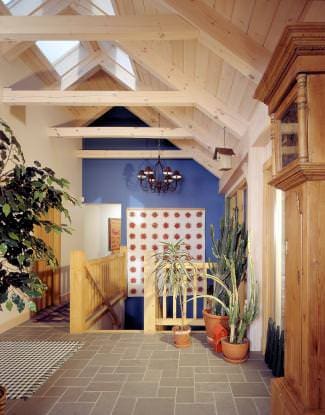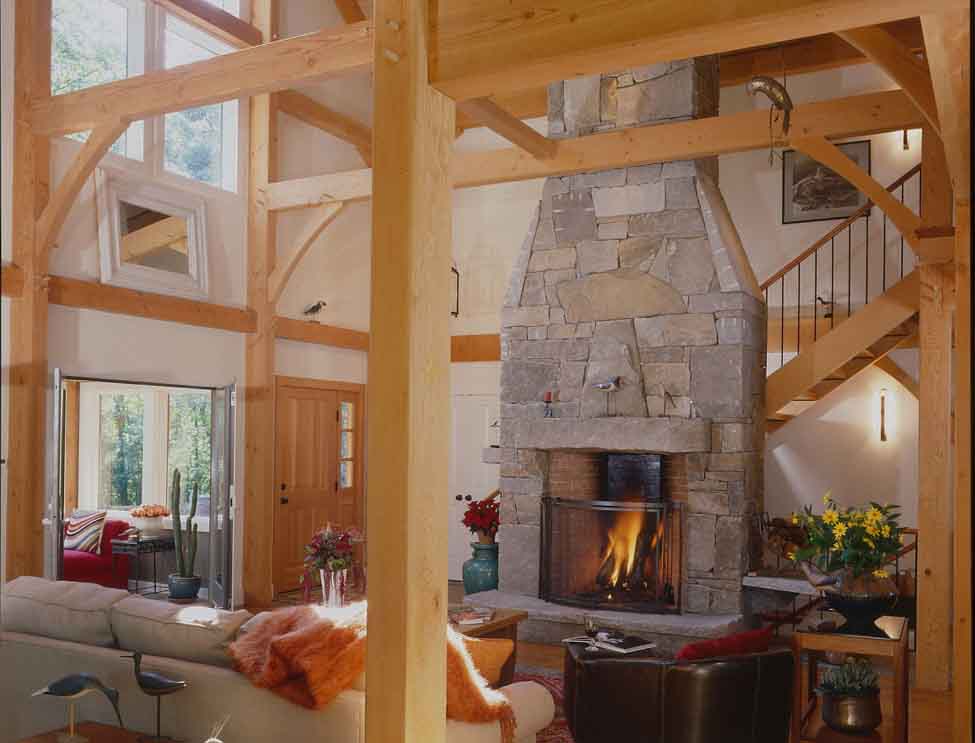While your home may be your castle, the enclosed space of a home can also present challenges to one’s health. Houses today, especially timber frame homes, are tighter than ever, which is a great thing for sustainable living and lowering energy costs. On the other hand, this tightness presents challenges to maintaining good air quality within the home. Thankfully there are many steps you can take to improve indoor air quality in a timber frame home. Here are some of the most impactful ways to keep your indoor air clean throughout the seasons.
Install and Maintain an Air Exchanger
The best way to provide fresh air to your house’s interior while maintaining insulation is what is known as a heat or energy recovery ventilator (HRV or ERV), which are commonly called air exchangers. These devices use a heat exchanger to provide fresh air to a home while maintaining the home’s insulation envelope. While these units are ubiquitous in new homes built by Timberpeg, older homes can benefit from these systems as well. These systems also have air filters, so you should make sure to clean them seasonally for best results. 
Image from http://www.airexchangers.info
Monitor Carbon Monoxide and Radon Levels
Carbon Monoxide is perhaps the most dangerous air contaminant you can have in your home. Since CO is produced by incomplete combustion reactions, make sure that your furnace is in proper working order by having it inspected and maintained regularly. Also make sure that you have carbon monoxide detectors installed as per code (or even beyond code) and test their batteries regularly. Radon is less of an acute health concern, but it causes over 20,000 deaths per year from lung cancer. You should test your home for radon exposure, which typically costs well under $100. If high levels of radon are detected, mitigation costs average only $1200.
Avoid VOCs
Volatile Organic Chemicals, or VOCs, are carbon-based molecules that readily evaporate into the air. Some of these chemicals can cause health concerns. Dichloromethane, for example, is a solvent found in paint strippers that is metabolized by the body into carbon monoxide. This is one reason why products like paint strippers should only be used outdoors or in well ventilated areas. Formaldehyde is a VOC of concern, since it is found in products like paint and carpet. When buying these products, make sure to buy ones labeled Low or No-VOCs. Even when making this selection, you should install these products in spring or fall when you can open the house up to ventilate to allow any potentially remaining VOCs to dissipate.
Keep Indoor Plants

Although plants are known for converting carbon dioxide to oxygen, this role has little benefit for inside air quality. However, plants can play a significant role in promoting good air quality by removing harmful VOCs from the air, such as formaldehyde, toluene and others. A NASA study suggested that having one plant per 100 square feet is ideal to help clean the air. Also, plants can bring a lot of cheer to a home, especially in winter months – just be careful to select the proper plants if you have pets in the home, as some houseplants can be harmful if swallowed. So, with all these great ways to keep the air fresh and clean in your home, while still getting the great energy saving benefits from living in an efficient timber frame home, what’s not to love about a timber frame home? If you’re looking to design and build a timber frame home of your own, or you just have questions about any of the topics featured here, please contact Timberpeg to learn more.

